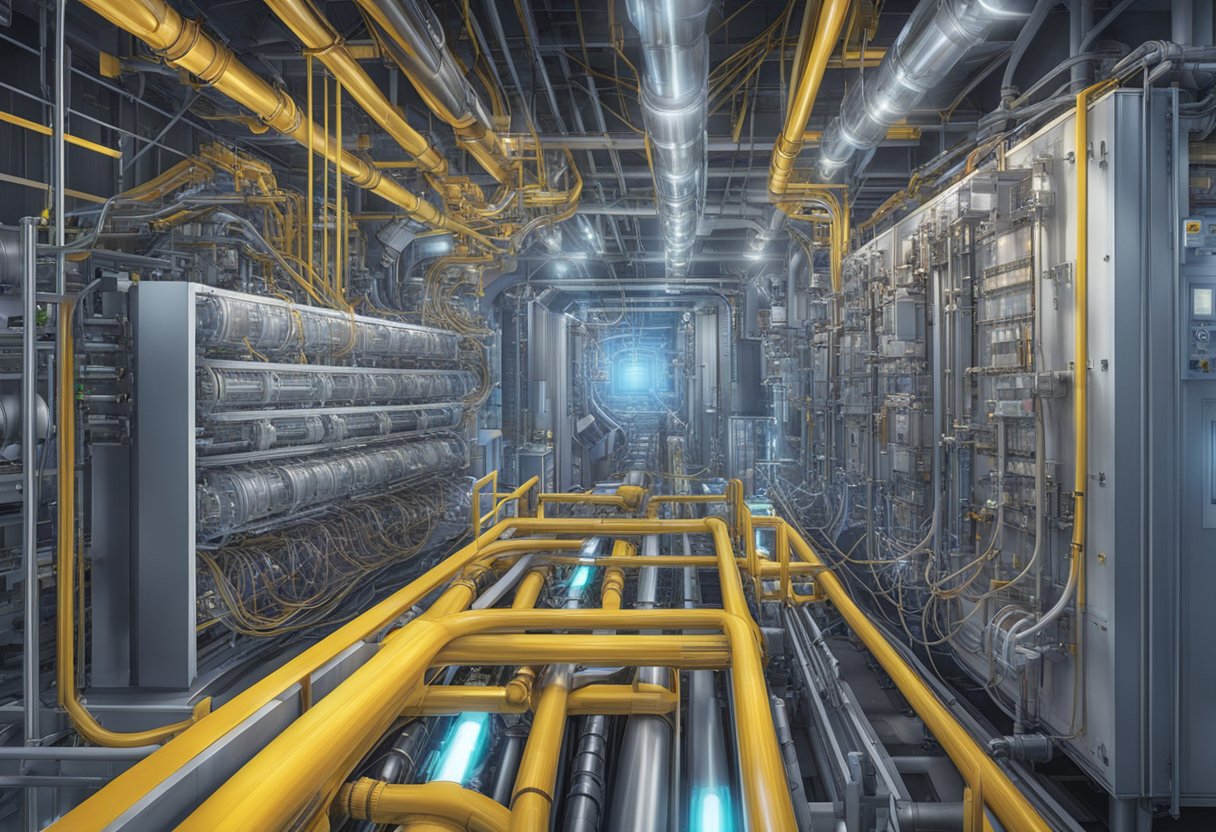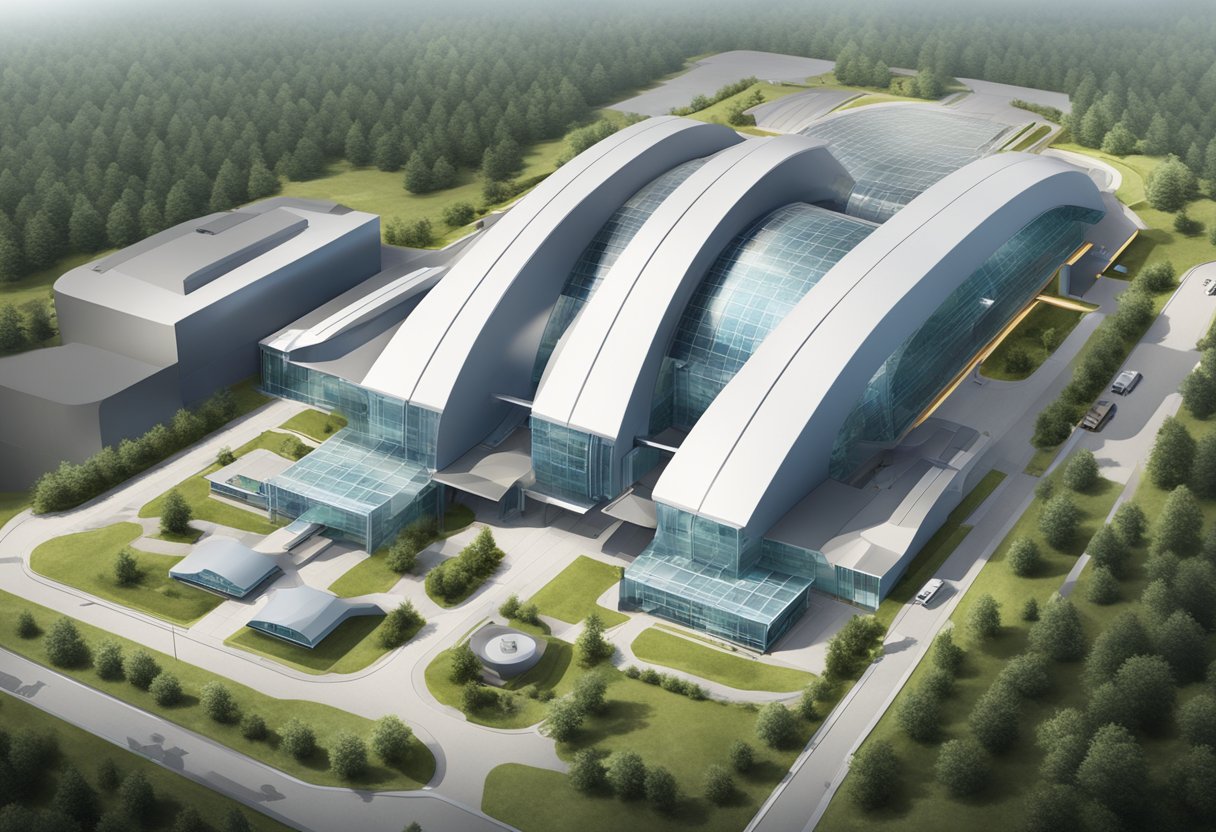ZDC Accelerator: Advancements in Particle Physics Research
19/01/2024
The ZDC accelerator is a cutting-edge technology that has been developed to enhance the performance of particle accelerators. It is a specialized device that is used to measure the energy of particles produced in high-energy collisions. The ZDC accelerator is an essential tool for scientists who study the properties of subatomic particles and the behavior of matter at extremely high energies.

The ZDC accelerator works by detecting the energy of particles that pass through it. It is made up of two detectors, one facing forward and the other facing backward. When a high-energy particle collides with a nucleus in the accelerator, it produces a shower of particles that pass through the detectors. By measuring the energy of these particles, scientists can determine the energy of the original particle and gain insight into the physics of the collision.
The ZDC accelerator has revolutionized the field of particle physics by providing scientists with a powerful tool for studying the properties of matter at extremely high energies. Its development has led to numerous breakthroughs in our understanding of the fundamental nature of the universe, and it continues to be an essential tool for scientists working in this field.
Overview of ZDC Accelerators

ZDC Accelerators are devices used to accelerate particles to high energies for various purposes such as research, medical treatment, and industrial applications. The acronym ZDC stands for Zero Degree Calorimeter, which refers to a type of detector used to measure the energy of particles produced in the accelerator.
ZDC Accelerators are typically large and complex machines that require specialized expertise to design, build, and operate. They consist of a series of components such as magnets, radiofrequency cavities, and beamlines that work together to accelerate particles to high energies.
One of the key advantages of ZDC Accelerators is their ability to produce high-energy beams of particles with a wide range of masses and charges. This makes them useful for a variety of applications such as cancer treatment, materials science, and fundamental physics research.
In addition to their scientific and medical applications, ZDC Accelerators also have important industrial applications. For example, they can be used to sterilize medical equipment, improve the properties of materials, and detect defects in electronic components.
Overall, ZDC Accelerators are powerful tools that have revolutionized our understanding of the universe and have contributed to numerous technological advancements. As research in this field continues, it is likely that we will see even more innovative applications of ZDC Accelerators in the years to come.
Design and Components

The ZDC accelerator is a state-of-the-art machine designed to accelerate particles to extremely high energies. The machine is made up of several key components that work together to achieve this goal.
Magnet Design
One of the most important components of the ZDC accelerator is its magnet system. The machine uses a complex array of magnets to guide and focus the particle beam as it travels through the accelerator. The magnets are carefully designed to produce a strong and uniform magnetic field, which is essential for ensuring that the particles are accelerated to the desired energy levels.
Beam Injection System
The beam injection system is another critical component of the ZDC accelerator. This system is responsible for injecting the particles into the accelerator and ensuring that they are properly aligned and focused. The beam injection system includes a series of magnets and other components that work together to guide and shape the particle beam as it enters the accelerator.
Cooling Systems
The ZDC accelerator generates a significant amount of heat during operation, which can be a major challenge for the machine’s designers. To address this issue, the machine is equipped with a sophisticated cooling system that helps to dissipate the heat and keep the machine operating at peak efficiency. The cooling system includes a variety of components, such as heat exchangers, pumps, and cooling towers, that work together to keep the machine cool and running smoothly.
Overall, the ZDC accelerator is an impressive machine that represents the cutting edge of particle accelerator technology. Its advanced design and components make it a powerful tool for scientific research and exploration.
Operational Principles

Particle Acceleration
The ZDC accelerator is a device that uses electromagnetic fields to accelerate charged particles to high energies. The acceleration process takes place in a vacuum chamber, which is necessary to prevent the particles from colliding with air molecules and losing energy.
The ZDC accelerator uses a series of accelerating structures, or cavities, that are arranged in a linear sequence. Each cavity contains a radio-frequency (RF) field that is used to accelerate the particles as they pass through. The RF fields are timed in such a way that the particles are accelerated in a synchronized manner, allowing them to gain energy without losing synchronization.
Collision Mechanics
Once the particles have been accelerated to their desired energy, they are directed into a collision region where they collide with a target. The collision produces a shower of particles, which are detected by various detectors surrounding the collision region.
The ZDC accelerator can be used for a variety of applications, including particle physics research, medical imaging, and cancer treatment. In particle physics research, the ZDC accelerator is used to study the fundamental properties of matter and the forces that govern the universe. In medical imaging, the ZDC accelerator is used to create images of the human body that can be used to diagnose and treat diseases. In cancer treatment, the ZDC accelerator is used to deliver high-energy particles to cancerous cells, killing them and sparing healthy tissue.
Overall, the ZDC accelerator is a powerful tool for studying the fundamental properties of matter and for advancing our understanding of the universe. Its ability to accelerate particles to high energies and collide them with targets has numerous applications in fields ranging from particle physics to medicine.
Applications of ZDC Accelerators
High-Energy Physics Research
ZDC (Zero Degree Calorimeter) accelerators are widely used in high-energy physics research to study the properties of subatomic particles. These accelerators are capable of producing high-energy particle beams that can be used to probe the fundamental building blocks of matter. With the help of ZDC accelerators, researchers are able to study the behavior of particles at extremely high energies and gain a better understanding of the laws of physics that govern the universe.
Medical Therapies
ZDC accelerators are also used in medical therapies, particularly in the treatment of cancer. These accelerators are capable of producing high-energy ionizing radiation that can be targeted at cancerous cells to destroy them. This process is known as radiation therapy and is a common treatment for many types of cancer. ZDC accelerators are also used in the production of medical isotopes, which are used in a variety of diagnostic and therapeutic procedures.
Industrial Uses
ZDC accelerators have a wide range of industrial applications, including materials processing, sterilization, and food preservation. In materials processing, ZDC accelerators are used to modify the properties of materials, such as increasing their hardness or improving their wear resistance. In sterilization, ZDC accelerators are used to kill bacteria and other microorganisms on medical equipment and food packaging. In food preservation, ZDC accelerators are used to extend the shelf life of food products by killing bacteria and other microorganisms that cause spoilage.
Overall, ZDC accelerators have a wide range of applications in various fields, including high-energy physics research, medical therapies, and industrial uses. These accelerators are capable of producing high-energy particle beams and ionizing radiation, which can be used for a variety of purposes. With continued research and development, ZDC accelerators are expected to become even more versatile and useful in the future.
Technological Advancements
Innovations in Accelerator Technology
The ZDC accelerator has seen significant advancements in its technology in recent years. One of the most notable innovations is the development of superconducting radiofrequency (SRF) cavities. These cavities use superconducting materials to generate and sustain high electric fields, which allows for more efficient acceleration of particles.
Another innovation in accelerator technology is the use of advanced magnets. The ZDC accelerator uses superconducting magnets that are capable of producing high magnetic fields with minimal heat generation. This results in improved energy efficiency and reduced cooling requirements.
Energy Efficiency Improvements
The ZDC accelerator has also made significant strides in improving its energy efficiency. One of the ways this has been achieved is through the use of regenerative braking. Regenerative braking allows the accelerator to recover energy that would otherwise be lost during deceleration and reuse it to power the accelerator.
Additionally, the ZDC accelerator has implemented a number of energy-saving measures, such as the use of LED lighting and the optimization of cooling systems. These measures have resulted in a significant reduction in energy consumption and operating costs.
Overall, the ZDC accelerator’s technological advancements have improved its efficiency, reliability, and performance. These innovations have positioned the accelerator as a leader in the field of particle acceleration and have paved the way for future advancements in the field.
Safety and Regulation
Radiation Protection
The ZDC accelerator is subject to strict regulations and safety protocols to ensure minimal exposure to radiation for both employees and the general public. The facility is equipped with state-of-the-art radiation monitoring systems that constantly measure the levels of radiation in the surrounding areas. In addition, all personnel working with the equipment undergo rigorous training and are required to wear protective gear to minimize exposure.
Operational Safety Protocols
The ZDC accelerator follows a set of strict operational safety protocols to ensure the safety of all personnel and equipment. The facility is equipped with a sophisticated control system that monitors every aspect of the accelerator’s operation. Any deviation from the established parameters triggers an automatic shutdown of the system to prevent any potential damage or safety hazards.
All personnel working with the equipment undergo extensive training on the proper handling and operation of the accelerator. Regular safety drills and equipment maintenance checks are conducted to ensure that the facility is always in compliance with safety regulations.
In conclusion, the ZDC accelerator is subject to strict safety and regulatory protocols to ensure the safety of all personnel and the surrounding community. The facility’s state-of-the-art radiation monitoring systems and operational safety protocols make it one of the safest and most reliable accelerators in the world.
Global Impact and Future Prospects
Economic Impact
The ZDC accelerator has the potential to make a significant impact on the global economy. The technology behind the accelerator has already been used in a variety of industries, including medical research, materials science, and energy production. As the technology continues to develop, it is expected to have an even greater impact on these and other industries.
One of the key benefits of the ZDC accelerator is its ability to produce high-energy beams of particles. These beams can be used to study the properties of materials at the atomic level, which is essential for developing new materials with unique properties. This could lead to the development of new and improved products, which could help to drive economic growth.
In addition, the ZDC accelerator has the potential to revolutionize the energy industry. By using high-energy beams to create nuclear reactions, the accelerator could be used to produce energy in a safe and sustainable way. This could help to reduce our reliance on fossil fuels and mitigate the impact of climate change.
Future Research Directions
As the ZDC accelerator continues to evolve, there are several areas of research that will be of particular interest. One area is the development of more powerful accelerators, which could be used to study even more complex materials and produce even more energy. Another area is the development of new applications for the technology, such as in the field of medicine.
One of the most exciting potential applications of the ZDC accelerator is in the field of cancer treatment. By using high-energy beams to target cancer cells, the accelerator could be used to destroy tumors without damaging healthy tissue. This could revolutionize cancer treatment and save countless lives.
Overall, the ZDC accelerator is a technology with enormous potential. As research continues, it is likely that we will see even more exciting applications of this groundbreaking technology.




